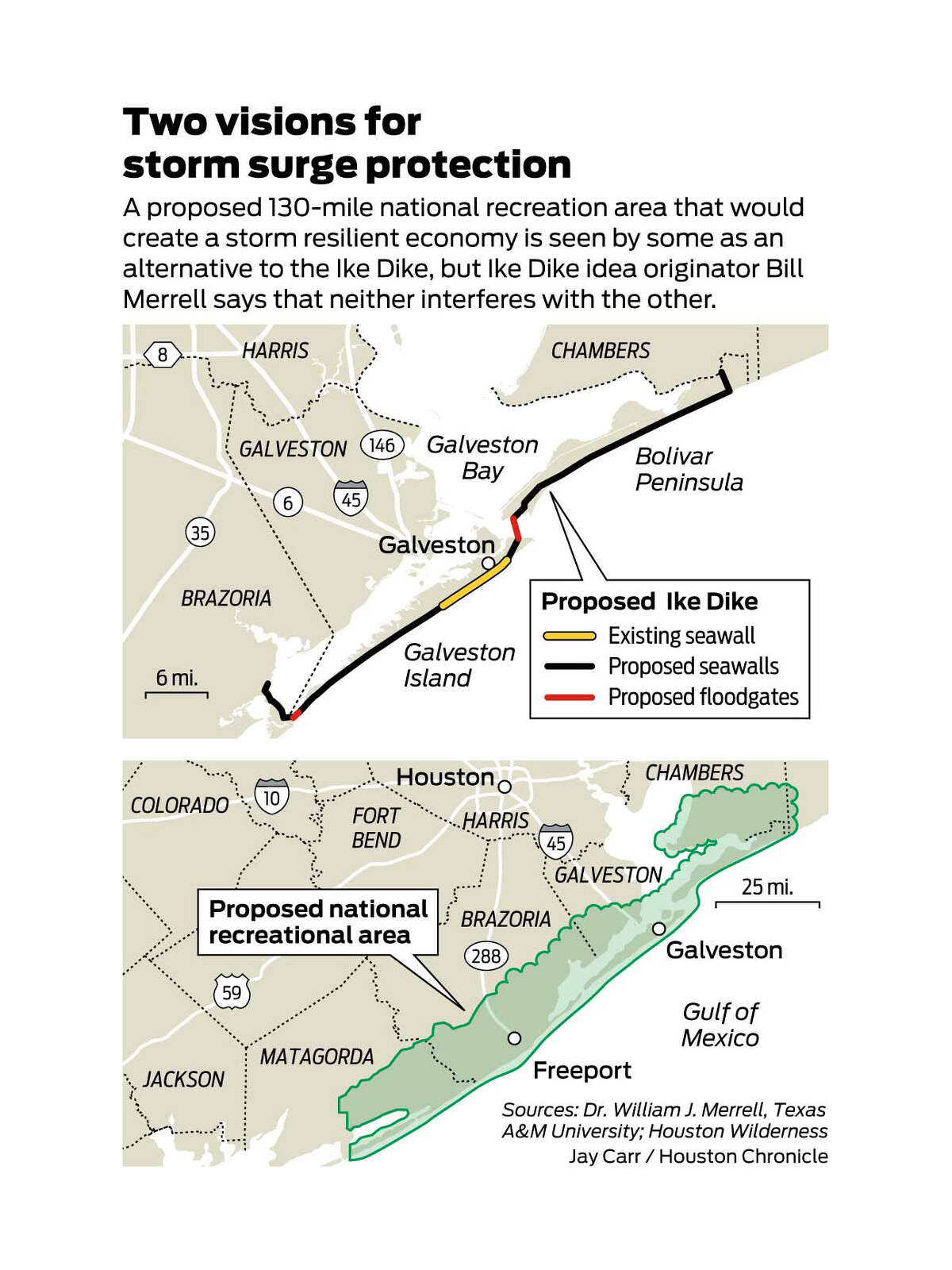Or, to put the question another way: Ike Dike, Ike Floodgate, something else, or nothing?
In 2009, months after Hurricane Ike devastated the upper Texas coast, Texas A&M-Galveston professor William Merrell unveiled a multibillion-dollar plan – to much skepticism – dubbed the “Ike Dike.”
The proposal calls for extending Galveston’s seawall 15 miles to the island’s West End, building a similar barrier along Bolivar Peninsula and installing massive Dutch-like floodgates at the entrance to Galveston Bay.
Snubbed by some for its price tag – an estimated $4 billion to $6 billion – and potentially detrimental environmental impact, the still-evolving concept since has gained many adherents who believe it would protect coastal communities and refineries near the Houston Ship Channel.
Five-and-a-half years after Ike, though, the true feasibility of Merrell’s proposal remains unknown. The same goes for a competing plan devised by Rice University that would guard the Bayou City’s industrial base – the largest petrochemical complex in the country – by placing a 600- to 800-foot wall across the 52-mile Ship Channel near the Fred Hartman Bridge or Morgan’s Point. The architects of the so-called “Centennial Gate” say the $1.5 billion project is more environmentally friendly than the Ike Dike and cheap enough to be funded without having to ask for federal help, meaning it could be built quicker.
Which way to go? Figuring that out is the aim of a new $4 million study by a six-county coalition that will assess both proposals, gather data and determine what – if any – storm surge remedies should be pursued to protect the Houston area from future hurricanes.
[…]
In the years since Ike, a cadre of local leaders, elected officials and academics have come to the conclusion that some kind of protective measures need to be taken, for safety, economic or environmental reasons.
That, however, is where any consensus ends, said Galveston County Judge Mark Henry, chairman of the district.
“Doing nothing has been the option used for the last several thousand years,” he said. “We don’t think it’s the best option.”
Harris County Judge Ed Emmett, re-appointed to the district’s board of directors last month, remains a skeptic.
Industry has not pushed for any kind of protective structure, the county’s top elected official said at a recent Houston Chronicle editorial board meeting. He expressed doubts the state could secure federal funding for such a project under the current administration, noting President Barack Obama never made a post-Ike visit to Texas.
“For many reasons, I am skeptical of both the ‘Ike Dike’ and ‘Centennial Gate,’ ” Emmett wrote in a white paper this year, in part because “no other area has chosen to build such protective structures.”
I’ve blogged about this stuff multiple times – see here, here, and here for the Ike Dike; here and here for the Ike Floodgate. I have no idea what the right answer is. As insurance policies go, these are pretty expensive. Not nearly as expensive as a devastating storm, of course, but it’s hard to gauge the odds of a storm hitting in just the right place to do that kind of damage. I’ll be interested to see what this study says, but I doubt we’ll be any closer to deciding on a course of action, much less acting on it.

